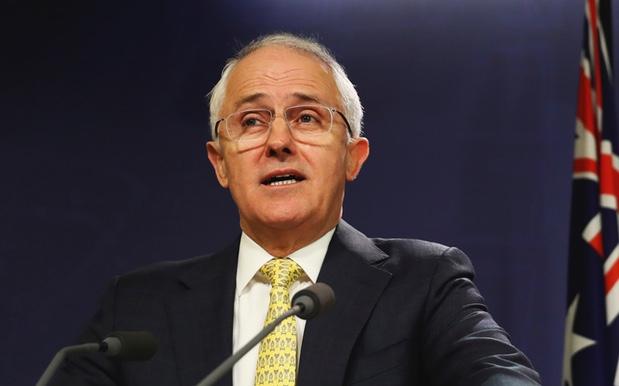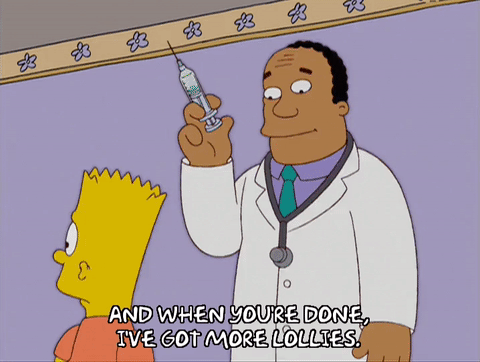
The Social Services Minister, Christian Porter, today delivered a report from accounting firm PricewaterhouseCoopers intended as a deep review of Australia‘s welfare system.
“We already spend $160 billion on direct welfare payments,” said Porter. “And what this new data is telling us is that for too many people inside the system the money flows but nothing changes and lives are not improving.”
It’s no surprise that the Coalition is tackling welfare. That’s kinda their thing. Winding back the welfare state as it has existed since the Second World War is one of the great fantasies of the Right, who see it as the ultimate way to solve the economic problems of the world. Cut back the welfare, everyone will get a job, and the rest of the pieces will fill into place. Peace in our time.

Porter said that a “revolutionary change” is needed to Australia’s welfare system to break the cycle of lifetime dependency, and to prevent the current $160 billion yearly bill from spinning out. To illustrate that point, he quoted the “total estimated future lifetime welfare cost” of $4.8 trillion, a metric which honestly doesn’t have much of a point outside of seeming like a really, really massive number.
Porter: The report shows we face a total estimated future lifetime welfare cost of $4.8 trillion #auspol #npc
— Political Alert (@political_alert) September 20, 2016
So, in response to the PwC report, Porter is keen to implement a few key measures which look a lot like the welfare reform undertaken across the pond in New Zealand – the general goal of which is to target welfare delivery much, much more tightly. This again is a constant theme in conservative approaches to welfare which kinda oversimplify structural problems with a simple maxim: let’s just give welfare to the people who really need it.
The government has unveiled the Australian Priority Investment Approach, a scheme which is intended to lock in on ‘at-risk’ groups and steer them into training and jobs. The idea here is to get someone into a career path before they become ensnared in the truly tempting proposition of living on a poverty wage through welfare. People are chomping at the bit for that one.
The government is also proposing linking welfare payments to school attendance, which is based on the success of the government’s no-jab-no-play vaccination policy. “Mutual obligation can be very successfully applied to greater effect, as we have seen with the obligation to vaccinate children,” Mr Porter said of the vaccination scheme today.
Of course, seeing as statistics show it’s Australia’s wealthiest suburbs which have some of the lowest vaccination rates, you have to see this as a pretty cynical move. Just because the government was able to use preschool attendance to jolt rich helicopter parents into vaccinating their damn kids doesn’t quite mean it’ll work to discipline deprived families into compliance. You know?

As has been brought up before, the Government plans to make jobseekers wait four weeks before they can access Newstart. This has caused a great deal of contention, with unions and other groups arguing that kind of deprivation is just going to cause a world of hurt and not really encourage any positive outcomes. Porter says that while it might be “challenging for a very short period of time”, it is “a huge win” because it might encourage people not to use welfare.
Porter was quick to point out that this is not an ideological review, because it never is. “At the heart of the Coalition Government’s case for welfare reform is that you do not reform according to some budget parameter or some ideology,” he said.
Patrick McClure, the former CEO of Mission Australia, who conducted a review into the welfare system in 2015, says that Australia is “learning from New Zealand’s weaknesses”. It’s no surprise that the advocates of welfare reform are making that . Because experts in New Zealand say that their country’s root and branch welfare shakeup might have saved money, but it also caused gaping holes in the safety net and “enormous” issues with child poverty.
Michael Fletcher, from the Institute of Public Policy at Auckland University, says that NZ’s welfare reform saved money by creating barriers to collecting benefits – and that it was evaluated not on how many people it got into work, but how many people it was able to prevent collecting welfare.
You can’t design a welfare system with 0 possibility of a few *rorters* without excluding a big bunch of needy. It’s a price of civilisation
— Tim Lyons (@Picketer) September 20, 2016
It’s hard not to be really, really fuckin’ cynical about this government trying the same thing here in Australia. Nobody argues with the principle of ensuring that every dollar on welfare is spent as effectively as possible, targeting areas of need and structural disadvantage in society. That’s called good government.
But it’s worth wondering what the goal really is here. Is it to ensure that people are actually in well-compensated, good employment which will provide for their material needs? Or is it just to boot as many people off benefits as is physically possible?
Source: ABC News.
Photo: Getty Images.



